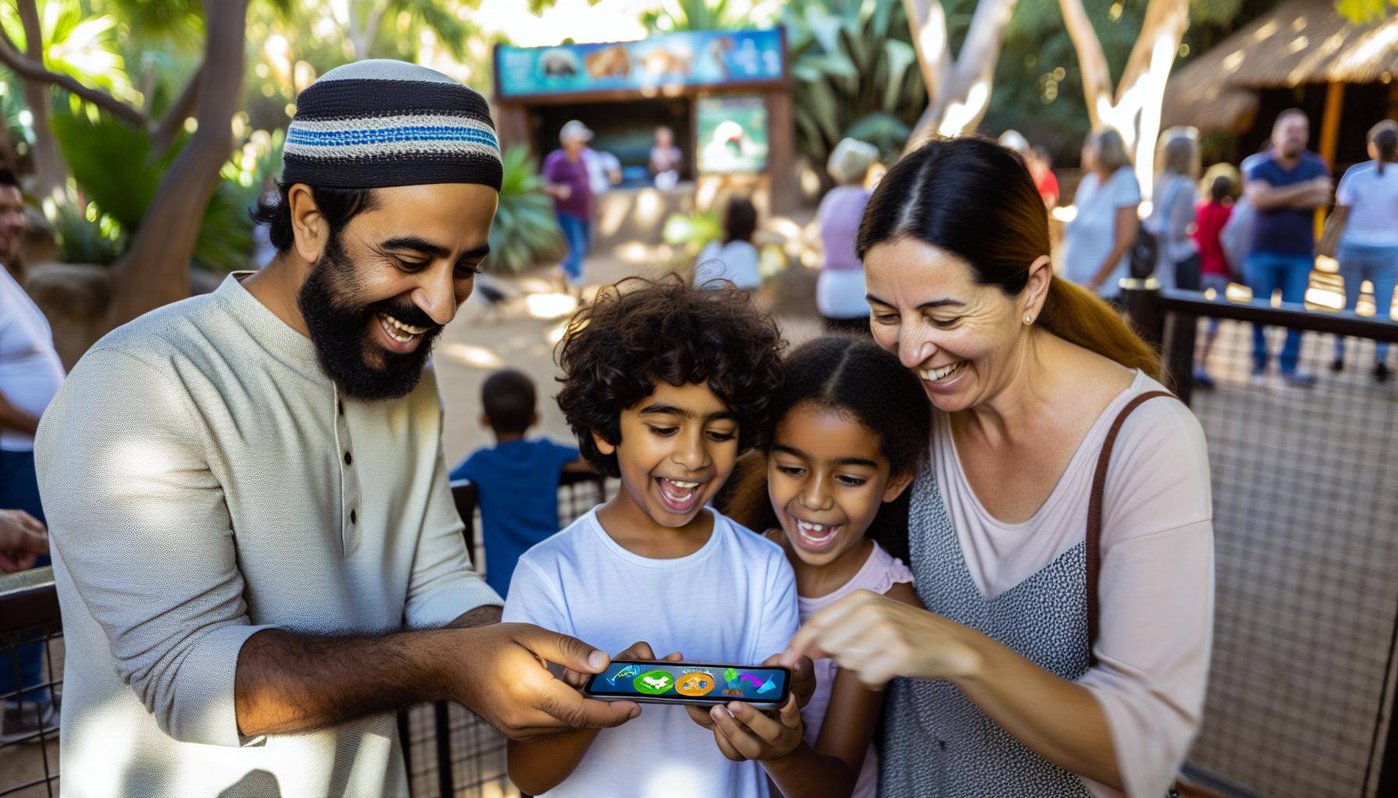Is Technology part of the answer to enhancing Stately Home and Country House
engagement?.
Kate Dearlove explores how visitor expectations are changing and how audience engagement platforms are transforming experiences for future posterity, today.
In the United Kingdom, we are blessed with a wealth of cultural and architectural heritage examples, none more so than the abundance of stately homes, country houses and their surrounding estates and gardens. Many of them are necessarily open to the public as visitor experiences to help with their upkeep and conservation.
According to English Heritage, it saw a boom in visitor numbers to its smaller, more local sites in 2021, with several reporting their best years since records began, with many of their hidden local gems situated away from traditional tourist destinations, seeing visitor numbers rocket by up to 82% in comparison to pre-pandemic 2019. A clear indication that the public took advantage of the ‘stay at home’ mandate to rediscover the heritage on their doorstep.
These wonderful sites, represented by both English Heritage, The National Trust and a vast array of other public and private owners, are reminders of bygone eras of opulence (and the contrasting abject poverty of the working class), and are beauties endowed with layer upon layer of history, and art collections that resonate with the hidden tales of romance, intrigue, and treachery.
Chatsworth House, in the Derbyshire Dales (home to the Duke and Duchess of Devonshire) was recently named the most beautiful stately home in the world and attracts thousands of visitors from all over, each year. For good reason too. Other notables are Highclere Castle, thanks to its celebrity status courtesy of Downton Abbey, not to mention Alnwick Castle, Hogwarts School of Witchcraft and Wizardry in the Harry Potter films.
The Bridgerton series is also helping to revive interest in this sector. Locals, and now that borders are open, a growing international clientele, are flocking to these estates hoping for a glimpse at the splendour portrayed on our screens, and for even just one magical moment, experience what it might have been like to live there.
It is not only the stunning homes on offer for exploring that are attracting visitors, but their magnificent grounds too, many of which were kept open for us to enjoy during the pandemic, for we are also a proud nation of gardeners.
Whether a stately home or a glorious garden, they all have one thing in common – the never-ending cost of maintenance.
In 2020, a study by private wealth law firm Boodle Hatfield, revealed that 660 of Britain’s more than 1600 stately homes, rely on public visits to keep them afloat. Many have also necessarily diversified their offerings.
There is thus a need and a market for these visitor attractions to build strong, long-lasting relationships with their visitors and audiences, as well as reach more potential supporters. How?
Technology to the rescue
Several of the properties used in the Bridgerton episodes have reported significant numbers of hits to their websites. In the case of Castle Howard, a 3408% increase, and English Heritage has said that Ranger House’s stats were up some 81%. The stats also reflect that there has been an increase in the 18-24 year old age group that are looking at these properties. Converting these into on site visitors might be the aim, but for longevity in the sector, retaining an engagement – on site and off - is essential, as it’s not about today, but tomorrow too, as our next generation are ultimately the vanguard and custodians of our rich and diverse heritage sites in the future.
Although popular series and films like the above have done much to encourage our younger generations to view heritage properties in a different light, a survey by Ecclesiastical Insurance in 2021, highlighted how many younger adults are disengaged with parts of the sector. During the 12 months before lockdown, most surveyed had never visited stately homes (73%), galleries (66%), castles (61%) or museums (46%). Yet of those polled, 39% wanted to see these attractions offer virtual experiences.
Expectations are changing and thus the need to transform experiences, and the positive role these sites can play in education at an earlier age will certainly have an impact on both their future engagement and long term protection.
This is where customisable audience engagement platforms (AEPs) come to the rescue. Whether or not a stately home or a country house is a television icon or not, an AEP – a cloud-hosted SaaS (software as a service) operator platform – coupled with a corresponding, mobile audience experience app, can broaden communication reach, enrich, and deepen learning and keep the conversation going, long after the doors are closed (or the series has run its course).
As Spring is in the air, and we emerge from a time of lockdowns, there’s no better time to get out into the open and take in the wonders of the parks and gardens in which some of our august buildings reside.
In yesteryear, paper maps would guide us around these establishments, and have limited space to contain information. With the advent of digital, however, we can now convey (and gather) enormous amounts of data and provide more immersive experiences. This lets visitors go deeper into a particular story or object of interest, simply by downloading an app and using their mobile devices to scan an object in question or trigger a nearby beacon, which releases additional interesting facts, keeping audiences entranced and engaged.
Technology has a place in the preservation and ‘interest factor’ of gardens too.
Gardens can be digitally mapped with wayfinding, points of interest, horticultural information and trails and tours, and as the smartphone is used, the platform captures infinite amounts of data on dwell time, footfall and engagement to help improve the visitor experience.
Engagement can be activated in many fun ways that also appeal to the young and young at heart. Why not create a treasure hunt, which the visitor can activate through their app, then follow a series of prompts and clues to arrive at the goal? How about incorporating gamification modules into the quest to unlock certain additional content, present quizzes that can result in rewards as each tier of questions are answered or objects are found. These rewards can be anything from a discount at the tearoom, or loyalty points to more serious outcomes linked to education and learning.
There is no end to ways in which digital can create an engaging environment.
As Easter is almost upon us, an Easter egg hunt would be the perfect way in which to engage the young and even the young at heart. The fun that can be had, whilst at the same time learning about the history, flora and fauna is all at the tip of the fingers and builds indelible memories. Here again, technology helps, with digital photo frames that can be unlocked within which to take a ‘selfie’ and then posted to social media, for example.
There are other plus points too – no more soggy paper maps, no more waste as they are thrown away, which saves money too. No more outdated sign boards either. Everything is housed in one place – on the audience experience app and updated in an instant when new information is required.
For curators, marketers, and the custodians of these architectural gems, AEP technology provides a powerful digital asset management system as well as a unique and necessary window into the behaviour of visitors too. Heat mapping assists with tracking dwell time, which in turn provides valuable insight into which parts of the experience are more popular than others. This can then help contribute to future curation.
The data that is gathered in real time by interactions from visitors with the app (customised and branded to reflect the property in question), can be segmented. This allows for tailored communication to be pushed out – email, newsletter, push notifications etc. Communication that is relevant helps to build a loyal following. In this manner, special offers, upcoming events, new collections, and the like, keep people in the loop, even when they have gone home.
Knowledge is power, and advanced AEPs can easily integrate other APIs into their platforms such as online booking arrangements, as too, membership systems that can digitally detect the member’s presence.
Diversification, as I mentioned earlier, is the lifeblood of posterity for these visitor attractions. Online retail is another channel that can be incorporated into the audience engagement platform, whose inherent intelligence can be utilised to showcase specific items relevant to specific visitors interests to increase the chances of purchase.
Best of all, technology has the power to ensure that the stories that are embedded in the fabric, walls, corridors, and well-trodden paths of our heritage, continue to speak for years to come.
Make your past, your future by finding out more about the power of the audience engagement platform and get in touch here.

/Blog/Authors/Kate-Dearlove.png?width=90&name=Kate-Dearlove.png)



/Blog/Authors/PHOTO-2022-05-06-14-05-59.jpg?width=90&name=PHOTO-2022-05-06-14-05-59.jpg)
